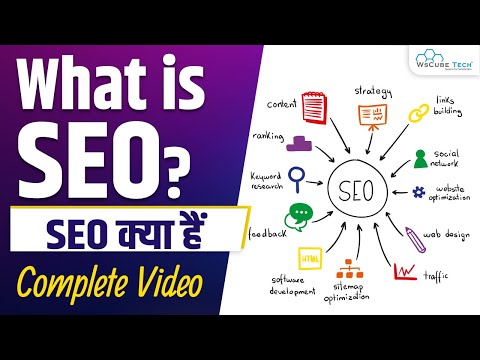SEO: Mastering the Art of Online Visibility
In the digital age, the significance of Search Engine Optimization (SEO) cannot be overstated. A pivotal tool for enhancing online visibility, SEO helps websites appear higher in search engine results, thereby increasing traffic and potentially boosting business success. This article delves into what SEO is, how it works, its different types, and provides a comprehensive overview of search engine optimization.
What is SEO?
Search Engine Optimization (SEO) refers to the methodology of optimizing a website to increase its visibility when people search for products or services related to that business in Google, Bing, and other search engines. The better visibility your pages have in search results, the more likely you are to garner attention and attract prospective and existing customers to your business.
How Does SEO Work
Search engines such as Google use bots to crawl pages on the web, going from site to site, collecting information about those pages and putting them in an index. Think of the index like a giant library where a librarian can pull up a book (or a web page) to help you find exactly what you’re looking for at the time.
Next comes the algorithms which analyze pages in the index, considering hundreds of ranking factors or signals, to determine the order pages should appear in search results for a given query. These ranking factors might include keywords present, site usability, speed of page loading and mobile-friendliness.
SEO works by optimizing these factors on your website through various strategies so that it appeals not just to search engines but also satisfies visitor queries effectively.
Types of SEO
1. On-Page SEO:
On-page SEO involves optimizing elements on your own website to improve rankings. This includes content elements (the quality of writing and the keywords it includes), HTML elements (such as meta tags and headers), and site architecture elements (such as page URL structure and navigation).
2. Off-Page SEO:
Off-page SEO focuses on increasing credibility and authority by linking or promoting your website from other sources. This includes link building from reputable sites back towards yours which demonstrates endorsement for your content.
3. Technical SEO:
Technical SEO refers to actions taken to help search engines crawl your content more effectively. Elements affected under technical SEO include robots.txt files, sitemap updates, and ensuring site scalability across devices.
4. Local SEO:
Local SEO is pivotal for businesses that operate on a regional level rather than nationally. Optimizing your local SEO implies more website traffic, leads, and conversions since the strategy is more relevant to your base local customer demographic.
5. Mobile SEO:
With an increasingly large number of users accessing websites via mobile devices, mobile optimization has become crucially important in influencing online rankings.
Why is SEO Important?
In today’s competitive market environment:
- Visibility & Branding: Being visible as a trusted resource by Google invariably boosts your brand’s prestige.
- Web Traffic: Increased web traffic offers more opportunities for conversion.
- Authority: Sites with good authority tend towards higher ranks; they are considered quality sources that can be trusted.
- User Experience: Good SEO practices enhance user experience making it smooth and positive which also affects rankings indirectly through metrics like bounce rates.
Conclusion
Understanding how vital an optimized presence online is crucial not only for thriving businesses but also individuals seeking greater engagement with their digital audience. As technology evolves so do patterns in consumer behavior necessitating consistent adjustments to one’s approach towards ideal site optimization practices.
Ultimately mastering this tool requires patience coupled with continuous learning but can lead to significant reward through improved user engagement and increased visibility within organic search results.




